Education Tools: A Comprehensive Guide
Inclusive education integrates all students, regardless of abilities, into mainstream classrooms, ensuring equal access. Key legislations like IDEA in the U.S. and CRPD globally mandate supportive measures. Schools need resources like Braille books, audio resources, and sign language support. This approach enhances social skills, self-esteem, and academic achievement for all students. Resources include Braille Bookstore, Harper Kids, and NAD for ASL learning.
EXPERT INSIGHTS
11/19/20244 min read


Inclusive education is the practice of integrating all students, regardless of their abilities, into mainstream classrooms, ensuring equal access to education. This approach promotes a sense of belonging and contributes to the holistic development of all students. Inclusive education not only benefits children with disabilities but also enriches the learning experience for their peers, fostering empathy, understanding, and collaboration.
Key legislation supporting inclusive education includes the Individuals with Disabilities Education Act (IDEA) in the United States, which mandates free and appropriate public education for students with disabilities. This act ensures that all children, regardless of their physical, intellectual, or emotional challenges, have the right to a public education that is tailored to their unique needs. The IDEA requires schools to provide individualized education plans (IEPs), which outline specific accommodations, modifications, and support services that each student needs to succeed academically and socially.
Additionally, the UN Convention on the Rights of Persons with Disabilities (CRPD) advocates for inclusive education on a global scale. This convention emphasizes the importance of an inclusive education system at all levels, urging countries to ensure that persons with disabilities can access inclusive, quality, and free primary and secondary education on an equal basis with others. The CRPD highlights the need for reasonable accommodations and individualized support measures to enable students with disabilities to achieve their full potential.
Key Legislation Links:
Importance of Inclusive Education.
Inclusive education fosters a culture of acceptance and understanding within schools and communities. By learning alongside their peers without disabilities, students with disabilities can develop stronger social skills, higher self-esteem, and greater academic achievement. This inclusive environment also helps to break down stereotypes and prejudices, preparing all students to live and work in diverse societies.
For inclusive education to be effective, schools must provide the necessary resources and support to address the diverse needs of all students. This includes training teachers to differentiate instruction, use assistive technologies, and create an inclusive classroom environment. Collaboration among educators, parents, and support staff is crucial to developing and implementing effective IEPs and ensuring that all students can access the curriculum.
Inclusive Education for Children with Visual and Hearing Disabilities.
Inclusive education for children with visual and hearing disabilities involves integrating these students into mainstream classrooms with the appropriate support. Providing accessible learning materials, such as Braille books, audio resources, and sign language interpreters, ensures they receive equal educational opportunities. For example, students with visual impairments can benefit from Braille textbooks, tactile graphics, and screen reader software, while students with hearing impairments may use hearing aids, FM systems, and captions on videos.
To support these students, schools must ensure that their facilities are accessible and that their staff is trained to meet the specific needs of students with sensory disabilities. This may involve modifications to the physical environment, such as improved lighting, soundproofing, and accessible signage, as well as specialized training for teachers on how to use assistive technologies and implement inclusive teaching strategies.
Resources for Schools:
Braille Books
Braille Bookstore: Offers a wide selection of Braille books for all ages. This resource provides a variety of books that can help students with visual impairments access the same literary materials as their peers.
American Action Fund for Blind Children: Provides free Braille books every month. This initiative ensures that children who are blind have a continuous supply of new reading material, fostering a love for reading and learning.
National Braille Press: Distributes Braille book bags to families with children who are blind. (Sources of free Braille books)
Audio Resources
Harper Kids: Provides age-specific audiobooks for children. Audiobooks can be an excellent resource for children with visual impairments, allowing them to enjoy stories and improve their listening skills. (Free audiobooks for kids)
LibriVox: Offers a catalog of public domain audiobooks. LibriVox provides access to a wide range of classic literature and educational materials in audio format.
PBS Kids Read-Alongs: Celebrities and authors read aloud books on YouTube and Facebook. This engaging format can capture the interest of young learners and make reading a shared, enjoyable experience.
Sign Language Resources
NAD - Learning American Sign Language: Offers resources for learning ASL. Learning ASL can help teachers communicate more effectively with students who are deaf or hard of hearing.
WeAreTeachers - Teach Sign Language: Provides resources for teaching ASL in the classroom. These resources can help create an inclusive environment where all students can learn sign language.
AccessForce - Reliable ASL Resources: Lists various ASL resources for students, parents, and teachers. AccessForce provides a comprehensive list of tools and materials that can support the learning and teaching of ASL.
These resources can help create an inclusive learning environment for all students. By using these tools, schools can ensure that children with visual and hearing disabilities receive the support they need to thrive academically and socially.
Additional Braille Resources:
DK Braille: Animals: Everything is written in both large print and Braille for kids. This book helps children with visual impairments learn about animals through tactile and visual means.
Wood Braille Image Board: This tactile board allows children to explore shapes and images through touch, enhancing their learning experience.
Braille Alphabet Board: A useful tool for teaching children the Braille alphabet, helping them to become proficient in reading and writing Braille.
Brailliant BI 20X Braille Display: This device allows users to read digital content in Braille, making technology more accessible for individuals with visual impairments.
By utilizing these resources and adhering to the principles of inclusive education, schools can ensure that every child, regardless of their abilities, has the opportunity to thrive in an equitable and supportive learning environment. Inclusive education is not just about physical integration; it's about creating a culture where diversity is celebrated, and every student's unique needs are met with understanding and respect.
InclusiveWorld.Blog
Breaking Barriers, Building Bridges
Contact us:
© 2024. All rights reserved.
Follow us
